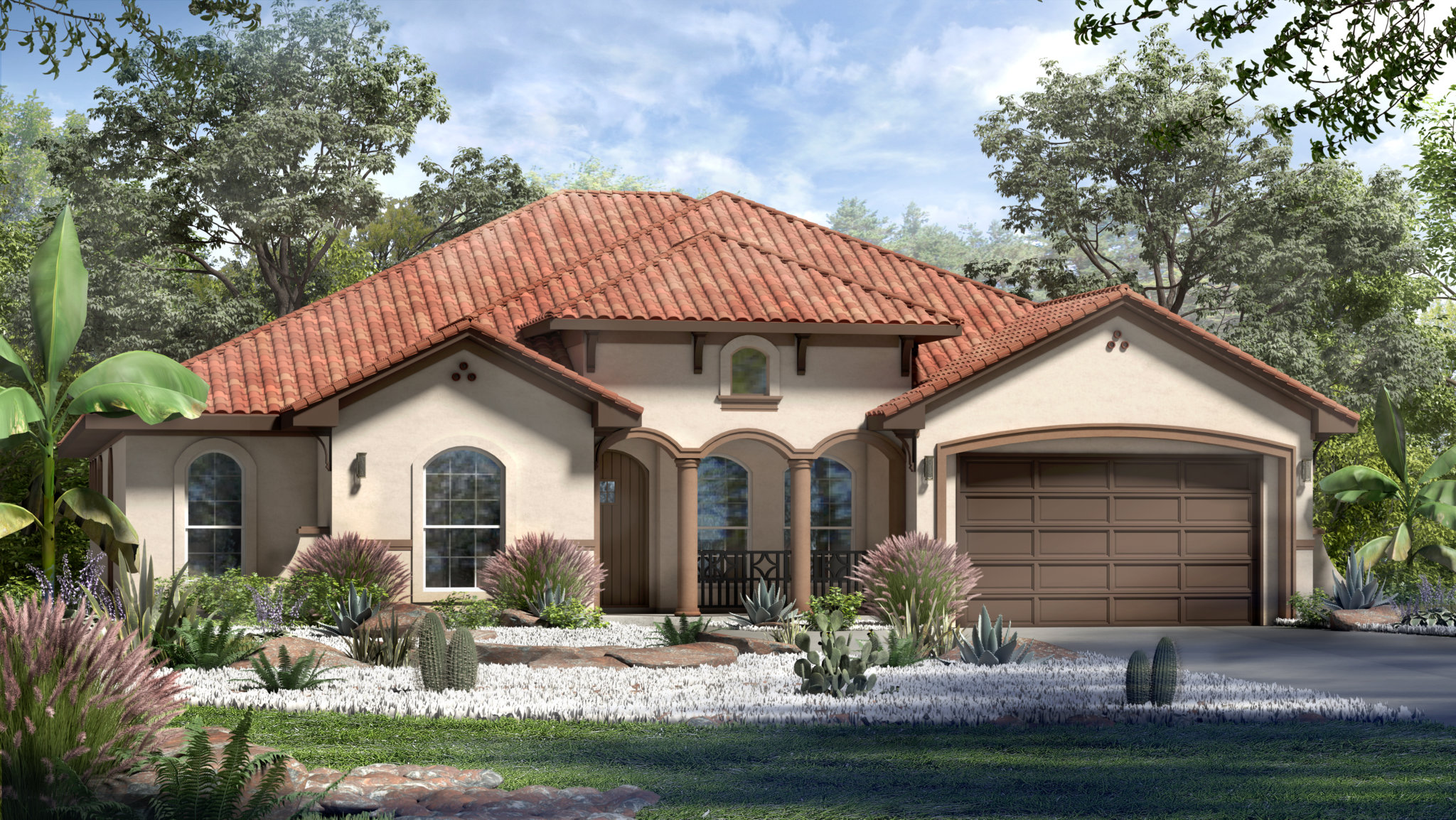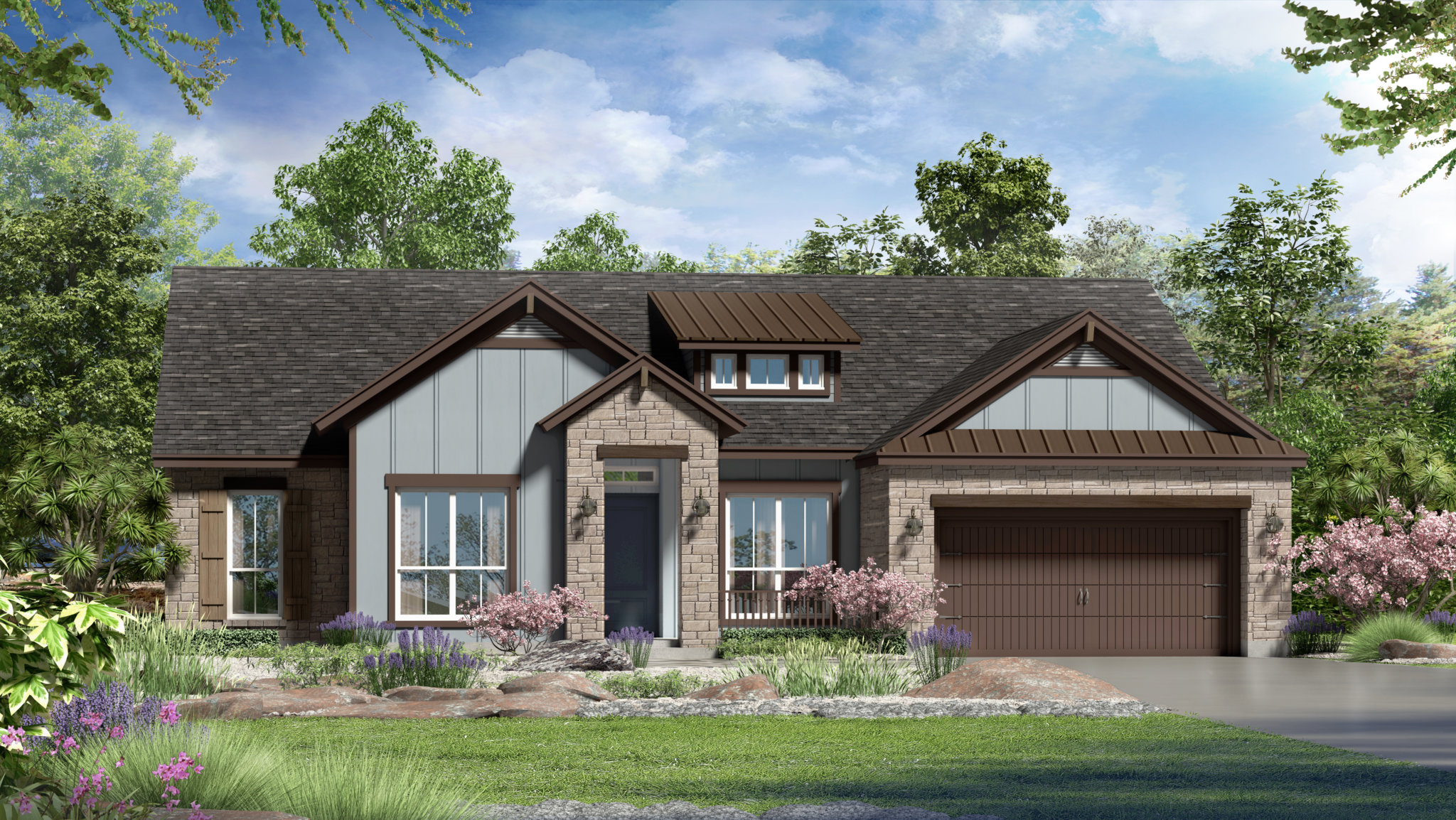What’s in an Architectural Style
Save the cookie cutter for the kitchen. Here at Kissing Tree, we believe choosing the exterior of your home is just as important as designing the inside of your home. Once you’ve narrowed down your floor plan and picked your homesite, it’s time to choose from one of our five architecturally distinct styles. Each one has a story to tell. Get to know the history and special features that make each style unique.
Santa Barbara (Spanish Mission Style)
The Santa Barbara-style dates back to the early 1880s where it first appeared in California as a result of the gold rush. Ten years later, train stations and other public structures in the Southwest started capitalizing on the style. Inspired by Spanish mission churches, the Santa Barbara-style boats large arched openings, thick stucco walls, beautiful tile floors and striking red tile roofs.
Distinct features include:
- Thick stucco walls
- Arches
- Charming courtyard
- Tile floors
- Red tile roof
Modern Farmhouse (Farmhouse)
This style dates back to the mid-1800s where it first appeared in the Midwest. The Modern Farmhouse style stemmed from simple farmhouse structures that provided the basics for families living in agricultural areas. The small, simple structures of the past have evolved into sleek, contemporary homes, borrowing elements from other styles – all of which provide modern comfort.
Special features include:
- Metal roof
- Large porches
- Simple detail
- Open floor plan
- Earth tones
Traditional (Cape Cod)
Dating back to the early 1700s, the traditional Cape Cod-style evolved from New England’s early Colonial-style houses. Purposeful in its creation, the materials used were meant to weather the area’s harsh, stormy climate. Rooted in American culture, this home style has stood the test of time as it remains one of the most popular homes in today’s culture.
Special features include:
- Steeply-pitched roofs
- Window shutters
- Simple detail
- Open floor plan
- Earth tones
Contemporary (International Modern)
Dating back to the 1930s, the contemporary style was influenced by Swiss-French architect Le Corbusier. Referred to as a “machine for living” by Corbusier, his belief was that function was of the utmost importance in the home. The modern style boasts natural light, open air and free-flowing space on the interior and precise, purposeful lines on the exterior.
Special features include:
- Dramatic exteriors
- Vintage look
- Open air
- Suspended lighting
- Exposed post-and-beam ceiling
Texas Hill Country (Farmhouse)
The Texas Hill Country-style borrows similar elements from the Modern Farmhouse-style, while incorporating indigenous materials. Featuring a ranch-style type of design, the Texas Hill Country look provides a unique Texas feel that builds off, and ads warm elements to, the modern farmhouse version.
Special features include:
- Front gables
- Extended roof eaves
- Limestone
- Cedar beams
- Porches





